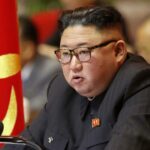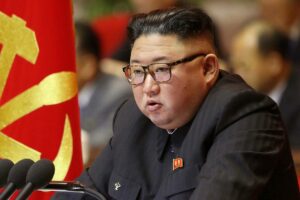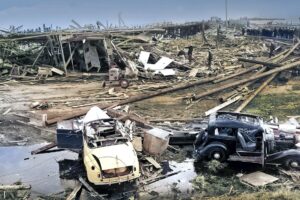The government is to begin fresh negotiations with South Korean automaker Motrex Co Ltd to establish a manufacturing and assembly plant for electric vehicles (EVs) in Nepal and abandon plans for petrol-powered cars as had been proposed earlier.
Motrex intends to assemble Hyundai and Kia passenger vehicles in Nepal.
On June 6, a meeting of the Investment Board Nepal chaired by Prime Minister Sher Bahadur Deuba approved the decision to renegotiate as part of Nepal’s plan to shift from petrol-powered light vehicles to battery-powered vehicles by 2031, officials said.
On December 11, 2019, Maha Prasad Adhikari, then CEO of the high-level government investment body, and Motrex CEO Lee Hyung-Hwan had initialled a project investment agreement to produce vehicles powered by fossil fuels.
In March 2020, the government approved a Rs10.54 billion investment by Motrex to set up a world-class manufacturing and assembling facility in the country.
The company had proposed to manufacture 50,000 units of different types of passenger and commercial vehicles per annum. The plan was to turn out 34,000 passenger vehicles, 15,000 SUVs and 1,000 commercial pickups.
Production would start with 5,820 units in the first year of operation.
The proposed site for the manufacturing and assembly plant is in the Motipur Industrial Area of Butwal, Rupandehi.
“We will be holding negotiations with the South Korean company to produce EVs,” said Amrit Lamsal, joint secretary at the Investment Board Nepal.
“The prime minister has briefed the Investment Board on Nepal’s commitment to [saving] the environment at different international forums.”
On November 1, 2021, the prime minister participated in the World Leaders Summit of the 26th Conference of Parties to the United Nations Framework Convention on Climate Change (COP26) in Glasgow, Scotland. The prime minister had pledged at the conference that Nepal aimed to reach net zero emission by 2045.
Nepal has planned to switch from petrol-powered light vehicles to electric autos by 2031, and the 2020-21 budget had announced a strategic plan to lower fuel imports and concomitant pollution.
“We expect to start the negotiations soon,” said Lamsal.
Motrex had planned to start assembling EVs only from the eighth year of production.
Nepali auto traders say the policy to switch to EVs is a welcome step, but the decision also reflects Nepal’s fickle policy.
“Nepal does not have a stable policy for industry. In the auto sector, it keeps fluctuating with every successive government,” said Dhurba Thapa, president of the Nepal Automobile Dealers’ Association.
“Apart from the Motrex issue, there are many other policies that keep changing. The government has changed the tax policy on electric vehicles four times in two years. It is suspicious,” Thapa said.
“As soon as the country gets a new finance minister, its economic policies and priorities are altered,” Thapa said. “These swings confuse potential investors.”
In the 2020-21 budget, the then finance minister Yubaraj Khatiwada had raised the customs and excise duties on EVs by 30 to 80 percent and 40 percent respectively, depending on capacity. Previously, EVs were subject to 10 percent customs duty and 13 percent VAT.
The government faced fierce criticism over the hike in taxes, and Khatiwada’s successor Bishnu Poudel rolled back the excise and customs duties on EVs in the 2021-22 budget.
After the taxes were reduced, EVs began entering the country in large numbers. Imports amounted to 1,551 units worth Rs4.52 billion in the first 10 months of the fiscal year ended mid-May, according to the Department of Customs. In the last fiscal year 2020-21, Nepal imported 249 EVs valued at Rs657.84 million.
True to fickleness on policies, taxes on EVs have been jacked up again. The Financial Bill for the next fiscal year 2022-23 has imposed a 30 percent excise duty on EVs fitted with 100-200 kW motors.
A 45 percent excise duty has been imposed on the import of EVs equipped with motors of 201-300 kW capacity. The excise duty has been fixed at 60 percent for EVs with a motor capacity of more than 300 kW.
Lawmakers have demanded that the government review the taxes on EVs.
Lamsal, spokesperson for the Investment Board Nepal, said Prime Minister Deuba had given clear directions to hold negotiations with Motrex on producing EVs only.
The South Korean company has made a few demands including arrangement of land for the construction of its plant.
According to Lamsal, Motrex is seeking a 60 percent waiver of customs duty and a waiver of excise duty on the import of vehicle parts.
“The tax waiver can be addressed only if the company begins production,” Lamsal said.
According to the company’s proposal, it will make 20 percent value addition while manufacturing vehicles in Nepal and provide most of the jobs to locals.
“The establishment of the manufacturing and assembly plant is expected to positively impact and support the development of the manufacturing industry in Nepal,” the Investment Board says.
Motrex, which produces and sells automotive parts, audio, navigation, telematics and remote control devices, maintains offices in Vietnam, Chile, Russia, Australia, the United Arab Emirates, Brazil, the United States, India, Mexico, Turkiye and China. Its products are shipped to more than 70 countries.
The company had applied to produce vehicles in Nepal during the Nepal Investment Summit held in March 2019.
Hulas Motors, established in 1997, was the first company to set up a vehicle assembly plant in Nepal. It produced vehicles like the Sherpa, Mustang V2 and Mustang Max.
In 2011, then prime minister Baburam Bhattarai chose the plain-looking Mustang produced by Hulas Motors as his official vehicle. The company had to stop production in October 2014 after Nepal’s upgrade to Euro III fuel standards.
Hulas Motors has sold 1,400 units of its vehicles in the Nepali market.
The diesel-powered vehicles were priced in the range of Rs1.62 million to Rs1.85 million. Demand was high in remote and hill areas, and the vehicles were popular for commercial passenger and cargo operations.
Thapa, who was a dealer of Hulas Motors, said the company had to stop production due to the unstable policy of the government.
“There was a change in policy right when demand for vehicles made by Hulas Motors had taken off.” Encouraged by rising sales, the company had also started producing spare parts to increase value addition, he said.
“Every policy changes in a moment. We cannot say what happened to Hulas Motors will not be repeated,” Thapa said. “Even domestic automobile dealers are ready to invest to establish a four-wheeler assembly plant, but there is no long-term policy and law to govern the sector.”
Currently, Bajaj and TVS are assembling two-wheelers in Nepal. Yamaha and Honda are also planning to set up assembly plants in the country.
“These companies are aiming to sell their products in the country. There is no possibility of export because neighbouring China and India are the largest exporters. Nepal’s automobile market is very small,” Thapa said.
Around 2,000 EVs have been sold in the country in the current fiscal year. Annual demand for private automobiles is 15,000–18,000 units, according to Thapa.
Nepal imported automobiles valued at Rs86.80 billion in the first 10 months of the current fiscal year ended mid-May, the Department of Customs said. In the whole of the fiscal year 2020-21, auto imports were worth Rs97.37 billion.
Source : Kathmandu Post















